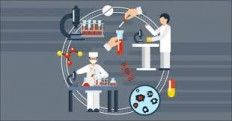Even before a drug could be tested in a clinical trial, the development process of a drug generally involves three major steps, including discovery, preclinical development, and then clinical trial.
Even before a drug could be tested in a clinical trial, the development process of a drug generally involves three major steps, including discovery, preclinical development, and then clinical trial. The transition from discovery to preclinical development is an ongoing process. The results obtained from toxicology and preliminary pharmacology testing often contribute to candidate selection for a drug. The filing of an Investigational New Drug (IND) sets up a boundary between preclinical development and Clinical Research Courses of a drug.
The following international organizations ensure drug safety and efficacy:
- World Health Organization (WHO),
- Pharmaceutical Inspection Co-operation Scheme (PIC/S),
- International Organization for Standardization (ISO),
- International Conference on Harmonization (ICH),
- Parenteral Drug Association (PDA), and
- International Society for Pharmaceutical Engineering (ISPE).
Take Clinical Research Training
Some of the national regulatory bodies issuing guidelines for drug development include:
- European Medicines Evaluation Agency (EMEA), Europe
- Food and Drug Administration (FDA), US
- Regulatory Operations and Enforcement Branch of Health Canada (ROEB), Canada
- Pharmaceuticals and Medical Devices Agency (PMDA), Japan
- Medicines and Healthcare products Regulatory Agency (MHRA), UK
- Brazilian Health Regulatory Agency (ANVISA), Brazil
- Therapeutic Goods Administration (TGA), Australia
- Turkish Medicines and Medical Devices Agency (TMMDA), Turkey





